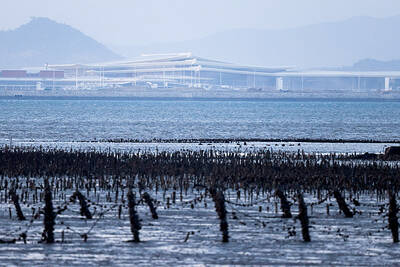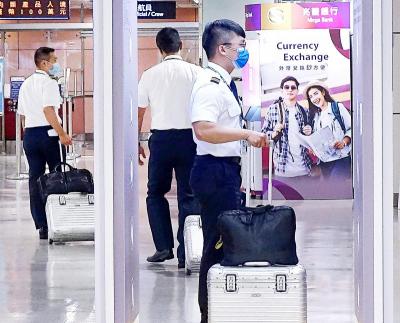The US Air Force sought to attack China with nuclear weapons early on during the Chinese military blockade of Kinmen and Matsu in 1958, but then-US president Dwight D. Eisenhower vetoed the idea, newly declassified Air Force histories released on Wednesday show.
But while Eisenhower rejected the use of the nuclear weapons as a first response to the Chinese actions, he and his top officials did not rule out their use if the crisis went on for an extended period. In that case, “nuclear strikes apparently would follow,” the documents reveal.
Air Force officials advocated hitting targets in the area of Xiamen and other cities, including Shanghai, if the crisis escalated, the documents, released by the National Security Archives, an anti-secrecy research institute located at George Washington University in Washington showed.
As the crisis grew, members of Eisenhower’s Cabinet and military leaders “accepted the idea that the United States would have to resort to nuclear weapons to prevent the Communists from using ships and aircraft to isolate the Nationalist-held islands,” one document said.
The chairman of the Joint Chiefs of Staff, General Nathan Twining, advocated dropping 10 kiloton to 15 kiloton nuclear bombs near what was then known as Amoy, and possibly on “airfields as far distant as Shanghai,” the document says.
While admitting that such acts “might bring down nuclear vengeance” on Taiwan, he “considered this is a risk that would have to be taken if the offshore islands were to be defended,” it says.
Pacific Air Force commander, General Laurence Kuter, was the main proponent of the immediate nuclear option, and was astounded when he found out that Eisenhower rejected it, the history says. Based on his assumption, in mid-August of 1958, five Strategic Air Command B-47s on Guam went on alert “to conduct nuclear raids against mainland airfields,” the document says.
On Aug. 25, at a White House meeting, Eisenhower “rejected the idea of using atomic weapons immediately upon the outbreak of hostilities. Instead, he insisted that the first strikes be made with high explosives, although nuclear weapons would be available if needed for subsequent attacks,” the history shows.
By October, the crisis subsided as China apparently concluded that the massive US response in defense of dictator Chiang Kai-shek (將介石) and his government rendered an all-out attack on the offshore islands not worth the effort, the history suggests.
The 10 formerly secret and top-secret histories of the US Air Force, which contain the history of the 1958 Taiwan crisis, were obtained by the archives under a Freedom of Information Act request initially filed in the 1990s and released only after a recent court action.
An analysis accompanying the Quemoy-Matsu crisis history suggests that the incident had a wider implication for US military strategy, and especially its thoughts on nuclear warfare.
“The assumption that the United States would meet Communist aggression by immediate nuclear retaliation did not survive the Taiwan crisis of 1958,” the document says. “The caution [Eisenhower] displayed at the time ... forced US military planners to review their attitudes concerning nuclear wars.”

Three Taiwanese airlines have prohibited passengers from packing Bluetooth earbuds and their charger cases in checked luggage. EVA Air and Uni Air said that Bluetooth earbuds and charger cases are categorized as portable electronic devices, which should be switched off if they are placed in checked luggage based on international aviation safety regulations. They must not be in standby or sleep mode. However, as charging would continue when earbuds are placed in the charger cases, which would contravene international aviation regulations, their cases must be carried as hand luggage, they said. Tigerair Taiwan said that earbud charger cases are equipped

Foreign travelers entering Taiwan on a short layover via Taiwan Taoyuan International Airport are receiving NT$600 gift vouchers from yesterday, the Tourism Administration said, adding that it hopes the incentive would boost tourism consumption at the airport. The program, which allows travelers holding non-Taiwan passports who enter the country during a layover of up to 24 hours to claim a voucher, aims to promote attractions at the airport, the agency said in a statement on Friday. To participate, travelers must sign up on the campaign Web site, the agency said. They can then present their passport and boarding pass for their connecting international

UNILATERAL MOVES: Officials have raised concerns that Beijing could try to exert economic control over Kinmen in a key development plan next year The Civil Aviation Administration (CAA) yesterday said that China has so far failed to provide any information about a new airport expected to open next year that is less than 10km from a Taiwanese airport, raising flight safety concerns. Xiamen Xiangan International Airport is only about 3km at its closest point from the islands in Kinmen County — the scene of on-off fighting during the Cold War — and construction work can be seen and heard clearly from the Taiwan side. In a written statement sent to Reuters, the CAA said that airports close to each other need detailed advanced

The age requirement for commercial pilots and airline transport pilots is to be lowered by two years, to 18 and 21 years respectively, to expand the pool of pilots in accordance with international standards, the Ministry of Transportation and Communications announced today. The changes are part of amendments to articles 93, 119 and 121 of the Regulations Governing Licenses and Ratings for Airmen (航空人員檢定給證管理規則). The amendments take into account age requirements for aviation personnel certification in the Convention on International Civil Aviation and EU’s aviation safety regulations, as well as the practical needs of managing aviation personnel licensing, the ministry said. The ministry